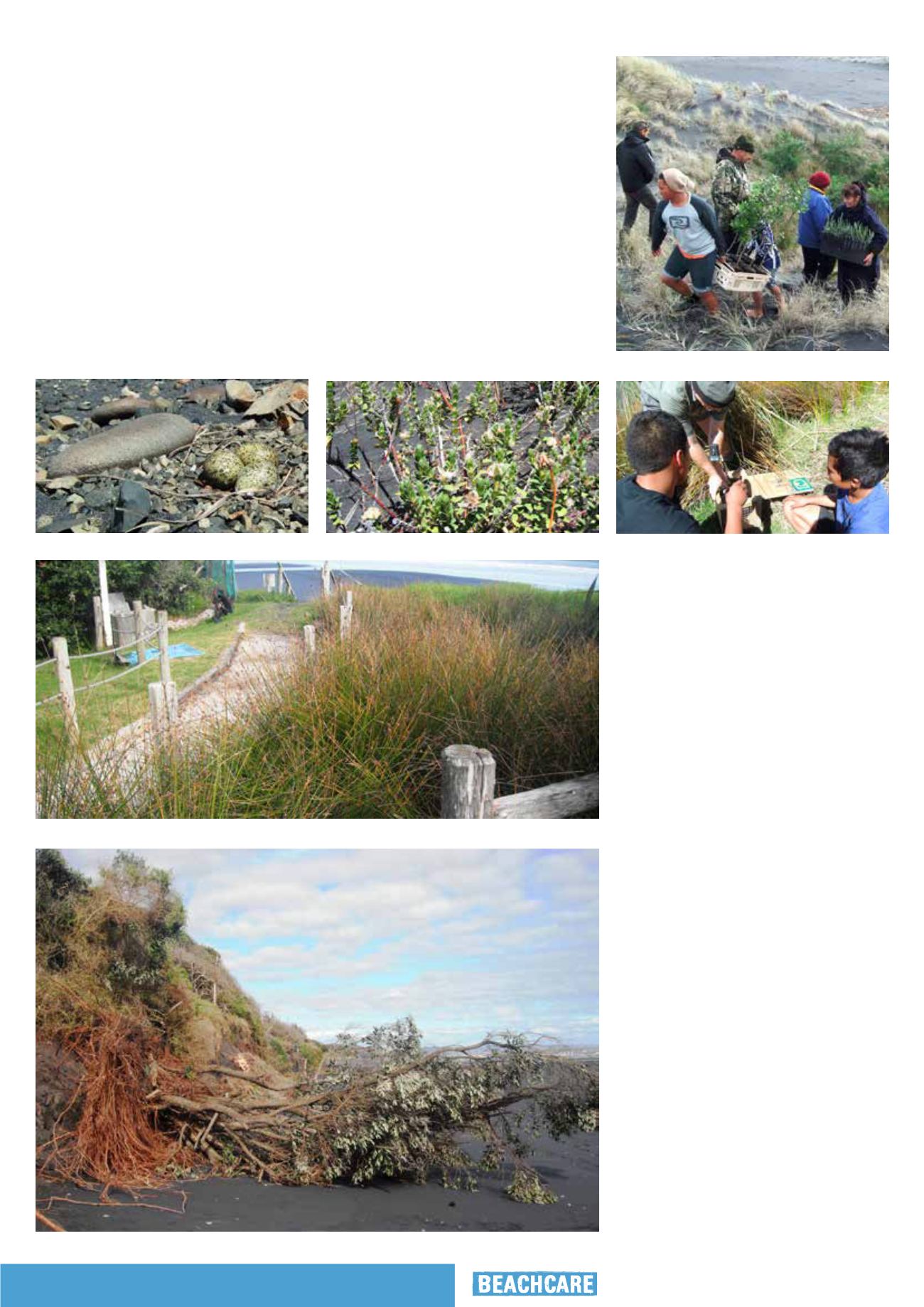
13
Magazine
Marokopa
The Marokopa sand spit is a sensitive site, both ecologically and culturally. The dune-land
environment contains multiple urupā sites (ancient burial grounds) and is home to a range of
threatened native species such as the New Zealand dotterel, katipo spider and native sand daphne.
With the sand spit now having a good cover of native dune plants helping to protect the urupā sites
from wind erosion, the Ngāti Toa Tū Pāhau Trust invited the wider community to help with its 2012
plantings. Volunteers came from as far away as Te Kuiti to lend a hand.
The 2012 working bee concentrated on planting pīngao in the last gap in the fore-dune, completing
the fore-dune restoration on the open coast, and infilling the fenced “biodiversity island” areas with
a range of native coastal tree and shrub species. In total, 940 native plants and trees were planted
by 25 volunteers – many participating for the first time in dune restoration work.
Future work at the site will concentrate on adding to the range of native plant species which would
have originally occupied the area, and to keep on top of any pest plants and animals that could
threaten the restored ecosystem.
Mo- kau
In 2012, Mōkau Beachcare members focused
on filling any pockets of bare sand above the
high-tide line with spinifex and pīngao, and
adding various back-dune plant species where
they could around the campground. The Mōkau
campground management have so far used
wīwī to line paths leading to the beach and have
created a new hedge from taupata and karo.
Using native plant species this way can provide
multiple benefits, including higher survival rates
than species not adapted to the harsh coastal
environment, and providing food sources for
native wildlife.
The 2013 winter proved to be a real test for the
50 metre stretch of restored dune planted in
front of the northern section of the campground
in 2010 and 2011, with a series of large storms
coinciding with spring tides. In some areas
where there was no dune, up to five metres
of the campground was lost to coastal erosion
from the large storm surges. Large pōhutukawa
and other tree species planted more than 50
years ago by campground goers were lost to the
erosion, and permanent campsites had to be
moved inland.
In comparison, the restored spinifex and pīngao
dune that was also inundated by the waves
remained intact and provided protection to the
land behind it. The small amount of erosion
at the toe of the dune will rebuild naturally
overtime as the spinifex grasses recover and
grow seaward.
The 2012 working bee.
Endangered NZ dotterel eggs on the sand spit.
The endangered sand daphne is now well established.
Dave Smith from DOC sets a trap.
Wīwī bordering the beach access way.
One of the pōhutukawa lost to the erosion in 2013.


